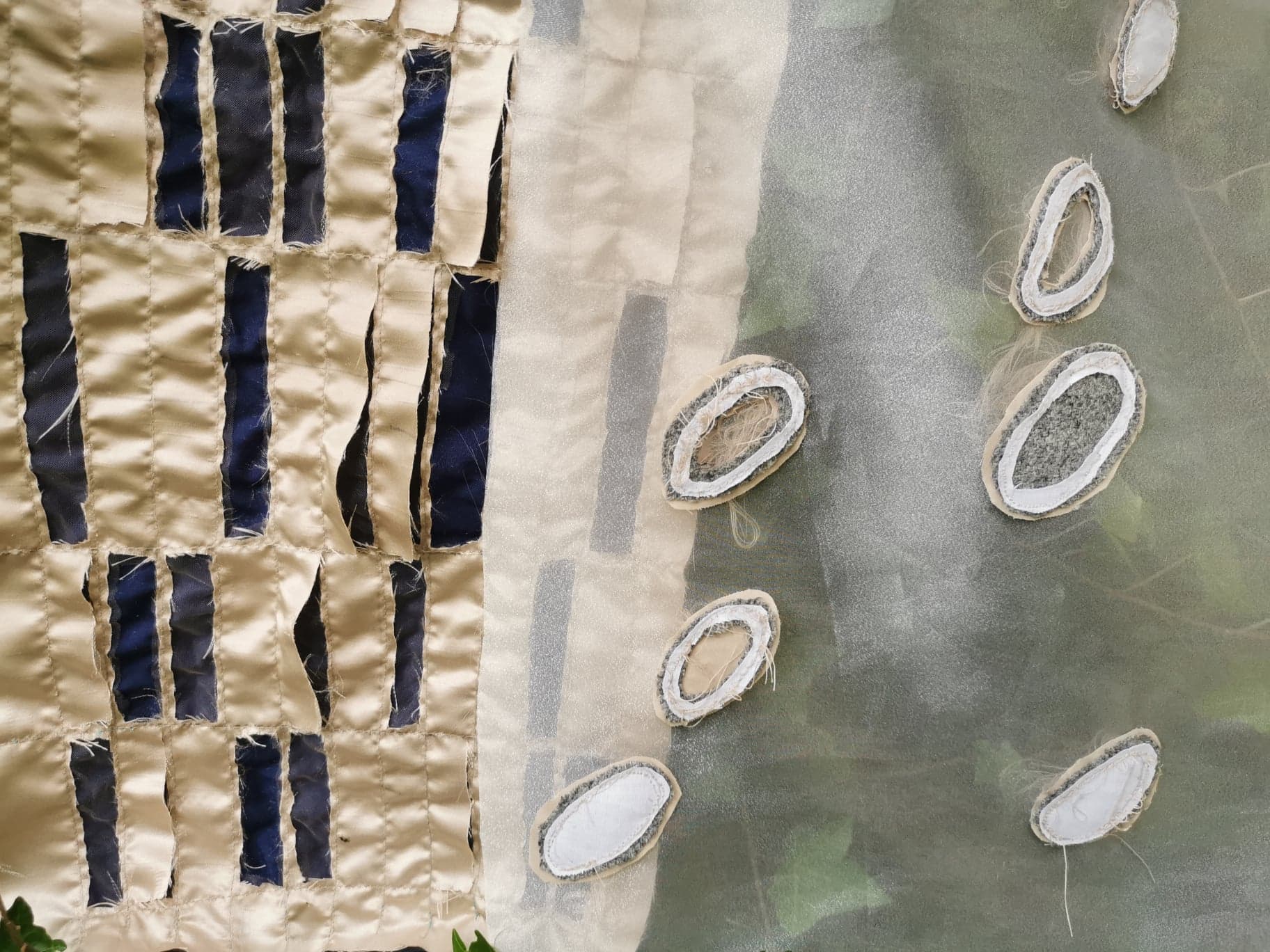
Here we go! My first two samples had been born. The two are similar technique wise, very different in weight and tactile sensation.
Let’s talk about them in more detail.

Sample I. The idea of the first sample came across my mind after watching the video my teacher Lindy made, where she was doing mola work.
I have not heard about the name before, yet I tried something similar in the past. Just like appliqué but way more efficient and tidy.
Considering my design studies and plans for samples, this technique seemed perfect to represent the data in the way I imagined.
I chose four different fabrics. Polyester voil, two types of cotton and wool. Layered them on top of each other so that the lightest fabric, the voile, would be underneath. That way it would be the base fabric. Usually it’s pretty hard to work with such fragile fabrics. That is when the mola work technique come in handy. Since all the layers of fabric are pinned all together, the sewing is easy and doesn’t damage the bottom layer. After the access fabric is removed you get the pictured results.
At the start of making I have not noticed I threaded my sewing machine incorrectly. I noticed that straight after making the first shape. The thread was all entangled on the back of my sample. The stitches on the front of the sample were quite messy as well. First I was upset but then I started to like the effect the thread made and kept going that way. Therefore it became a happy mistake, the fabric now is kind of two sided. Check this out :

I sew all fabrics together, producing shapes with the stitch. Removed the access fabric. The shapes were made accordingly to my research. After that I removed layers of fabric on each shape, based on the graphs I had made after gathering the data. The feel of the fabric is a balance of light and heavy weight. The base is light, but the attached segments makes it feel more tangible and flexible.
The sample is quite large, about A2 size.
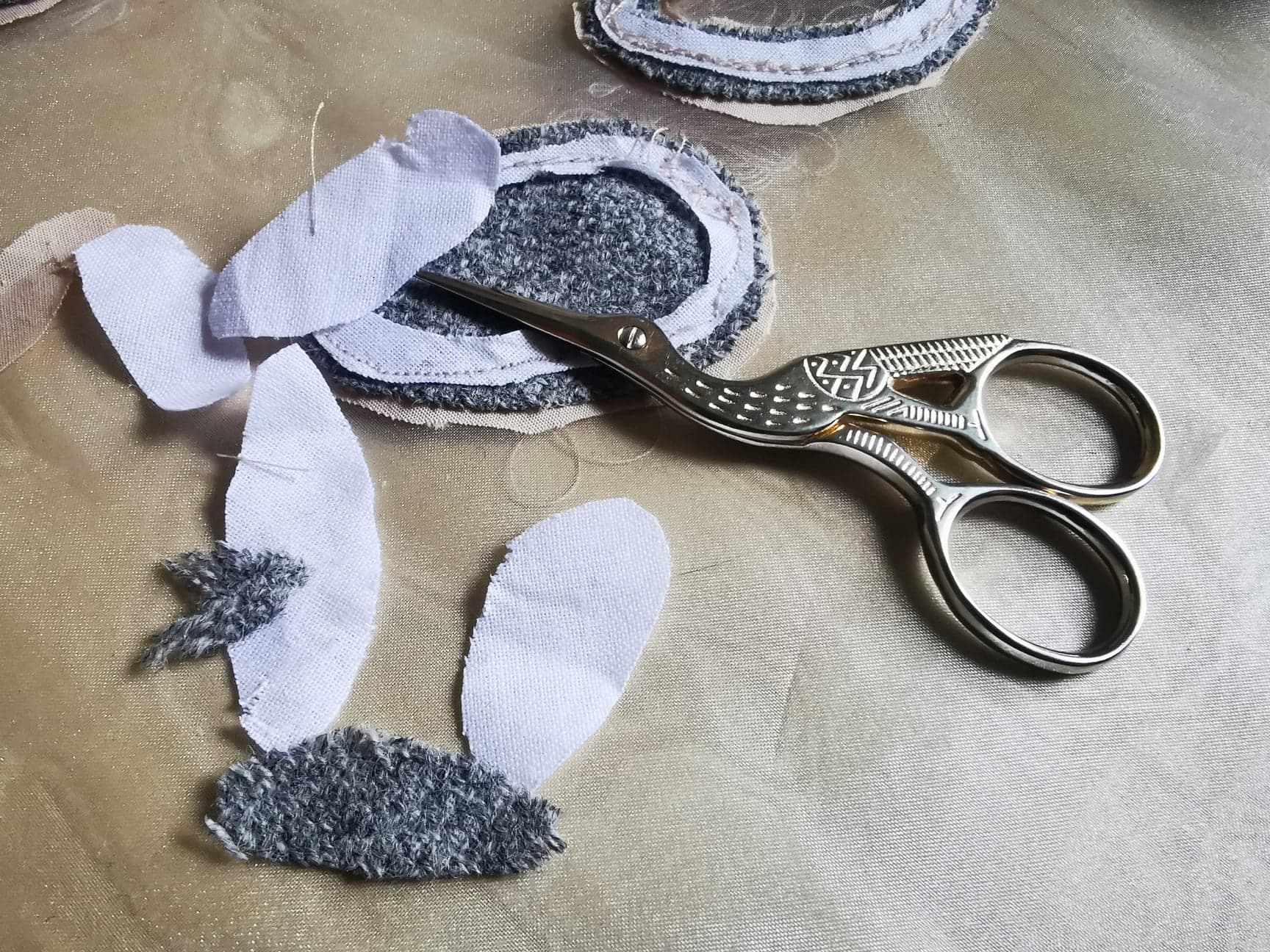
Have a closer look:
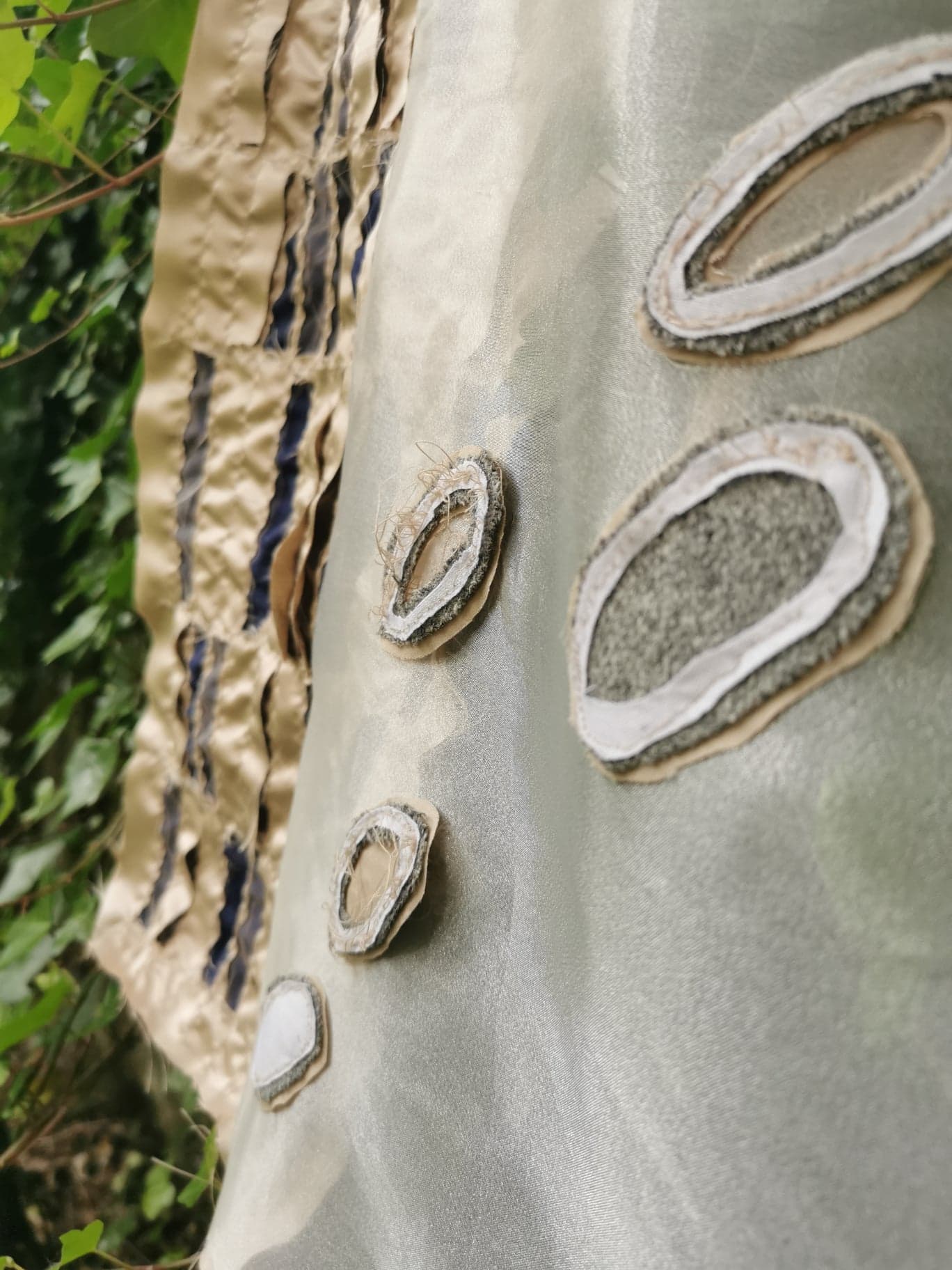
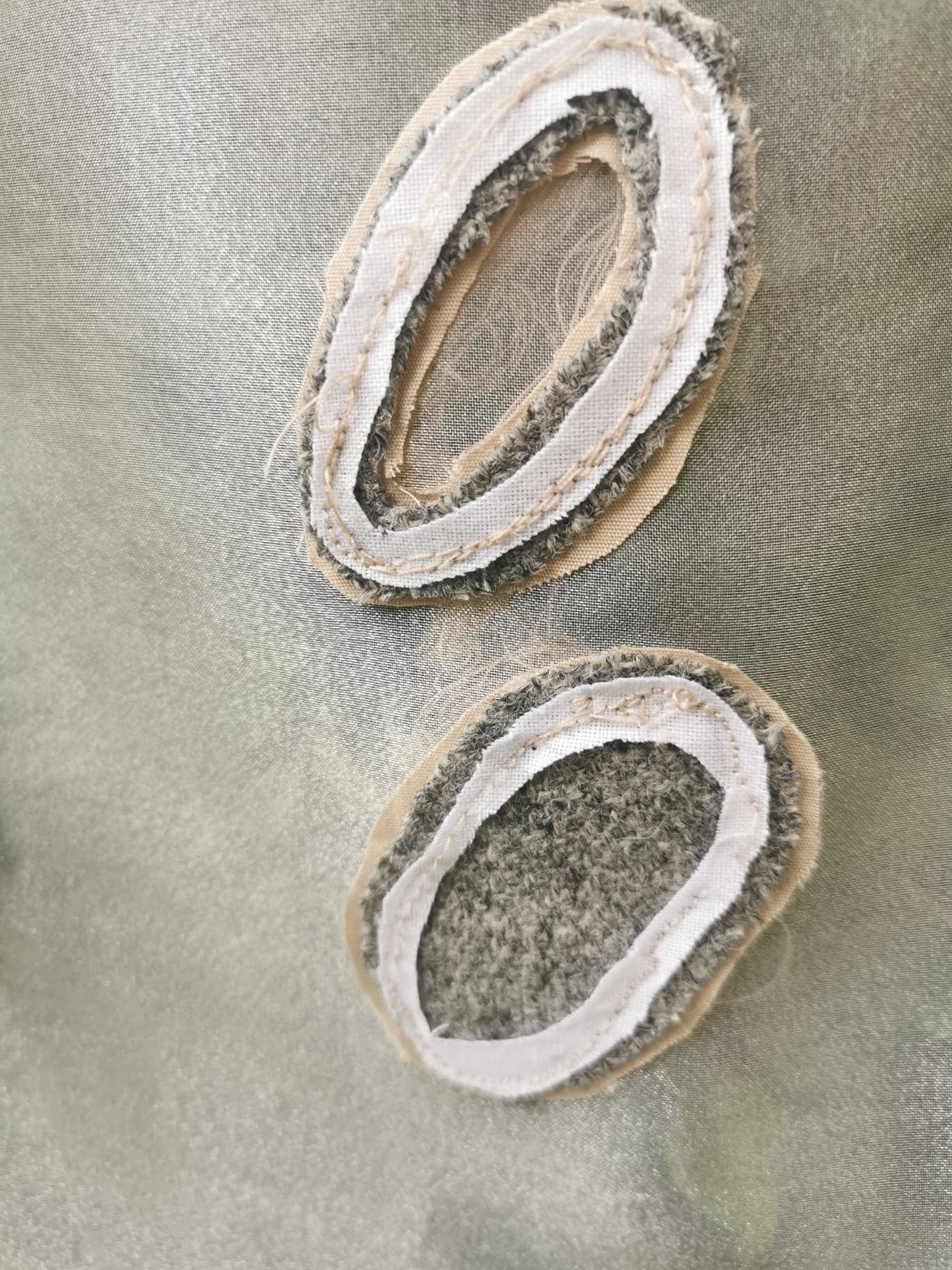
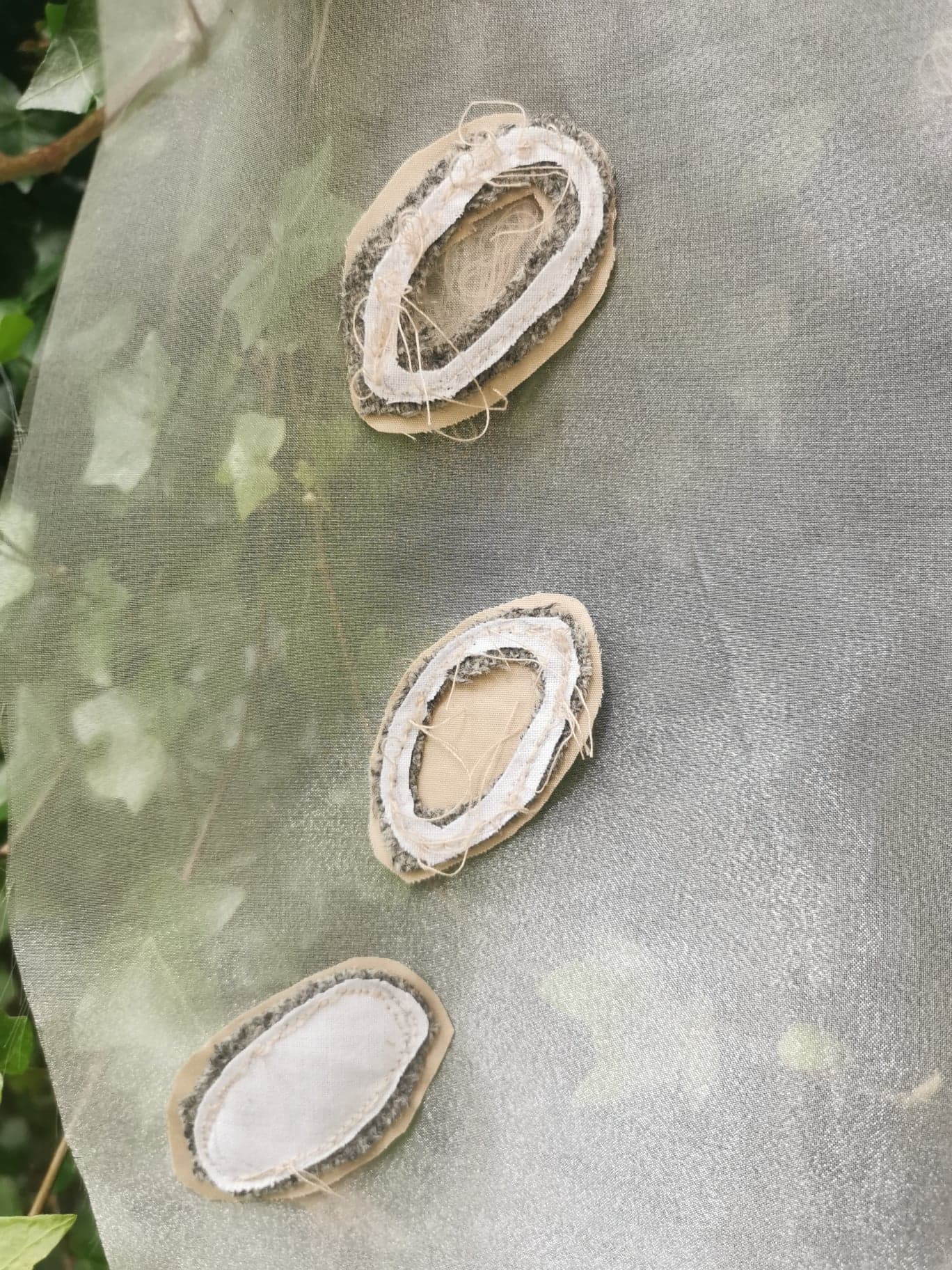

Sample II. Another A2 size sample. This time its quite much more heavier. There are three fabrics merged together – cotton, tulle and polyester. All together it feels quite thick. Has a feeling of bed cover or a light jacket.
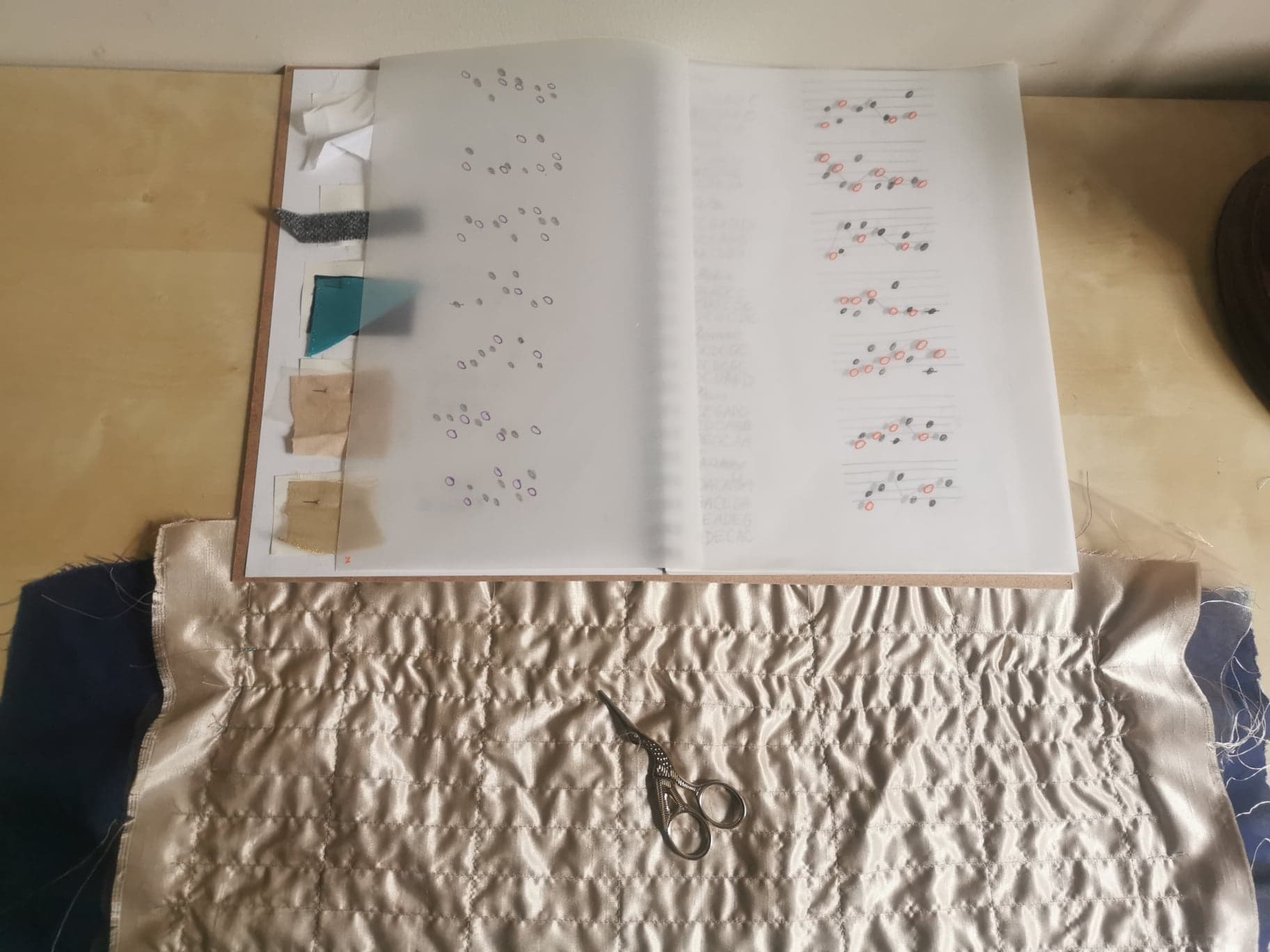
This sample directly represents a section of my design studies. Each fabric represents one layer of musical notes. Depending on the repetition of notes the fabrics were cut out accordingly.
I have used reverse appliqué technique. Joined the fabrics with simple straight machine stitch, did the grid. After, cut out one or two layers of fabric, all based on my data research. Some openings are cut just half way. That came to be like that while working, I thought I quite like the effect.
Have a closer look :
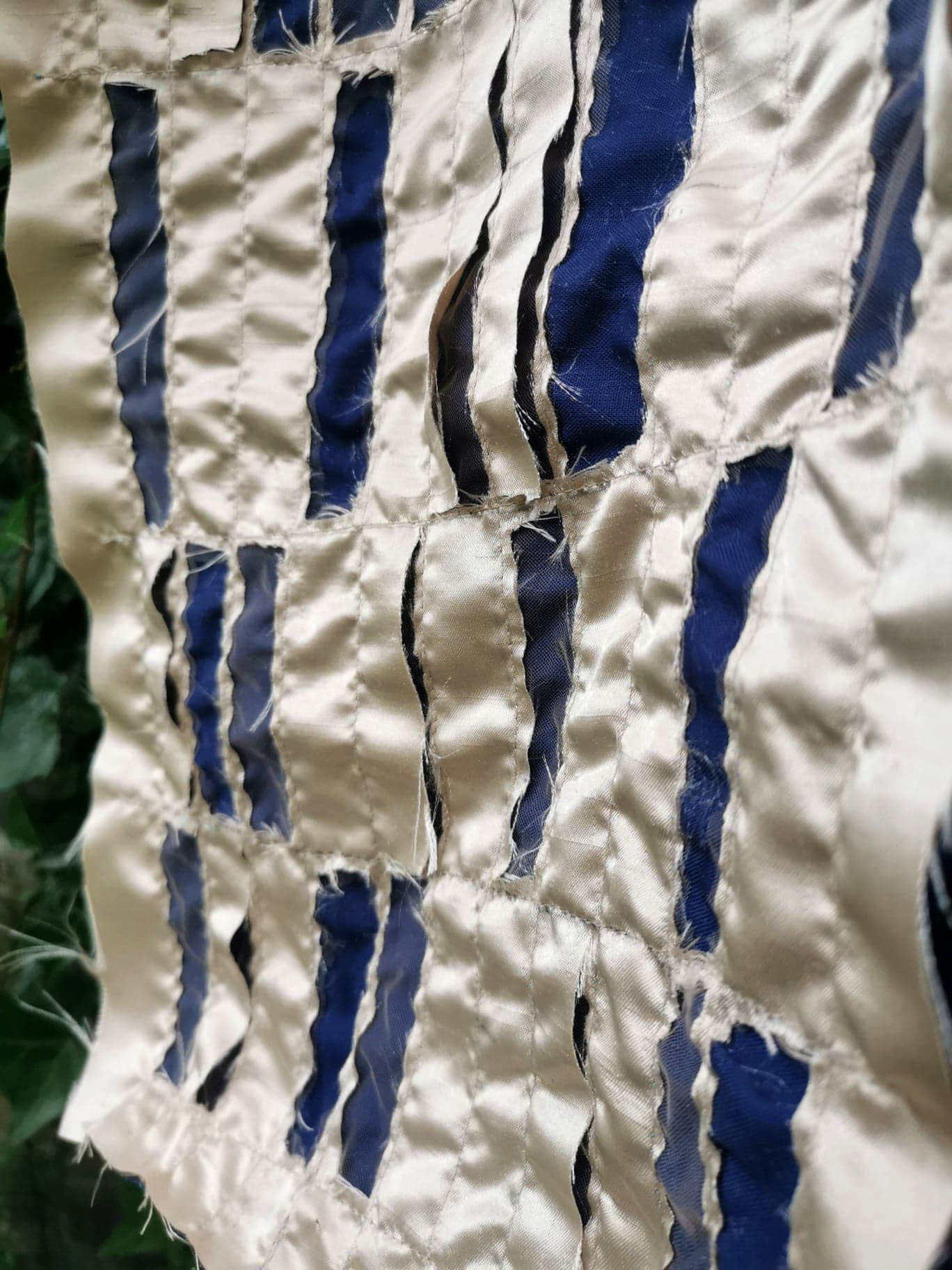
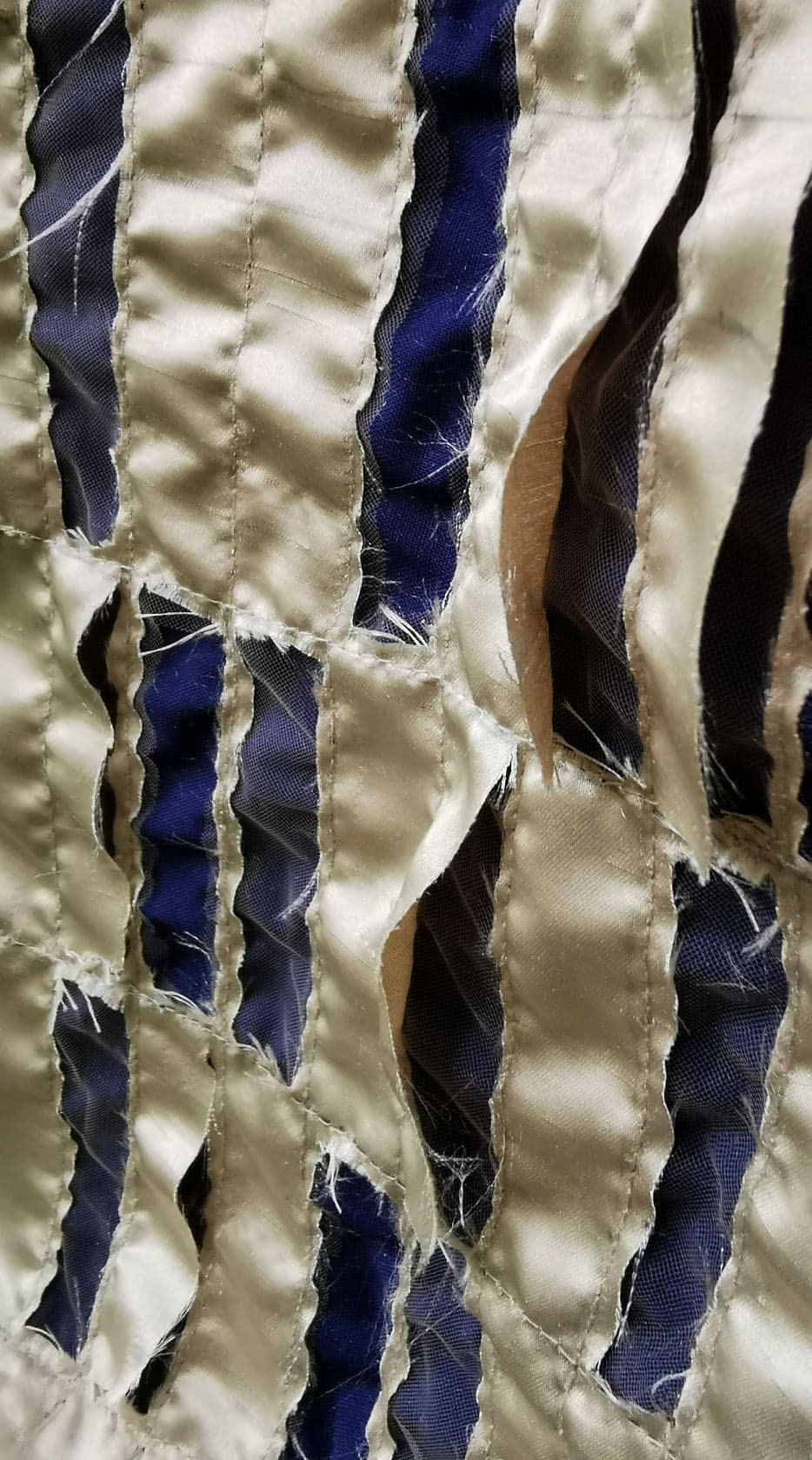
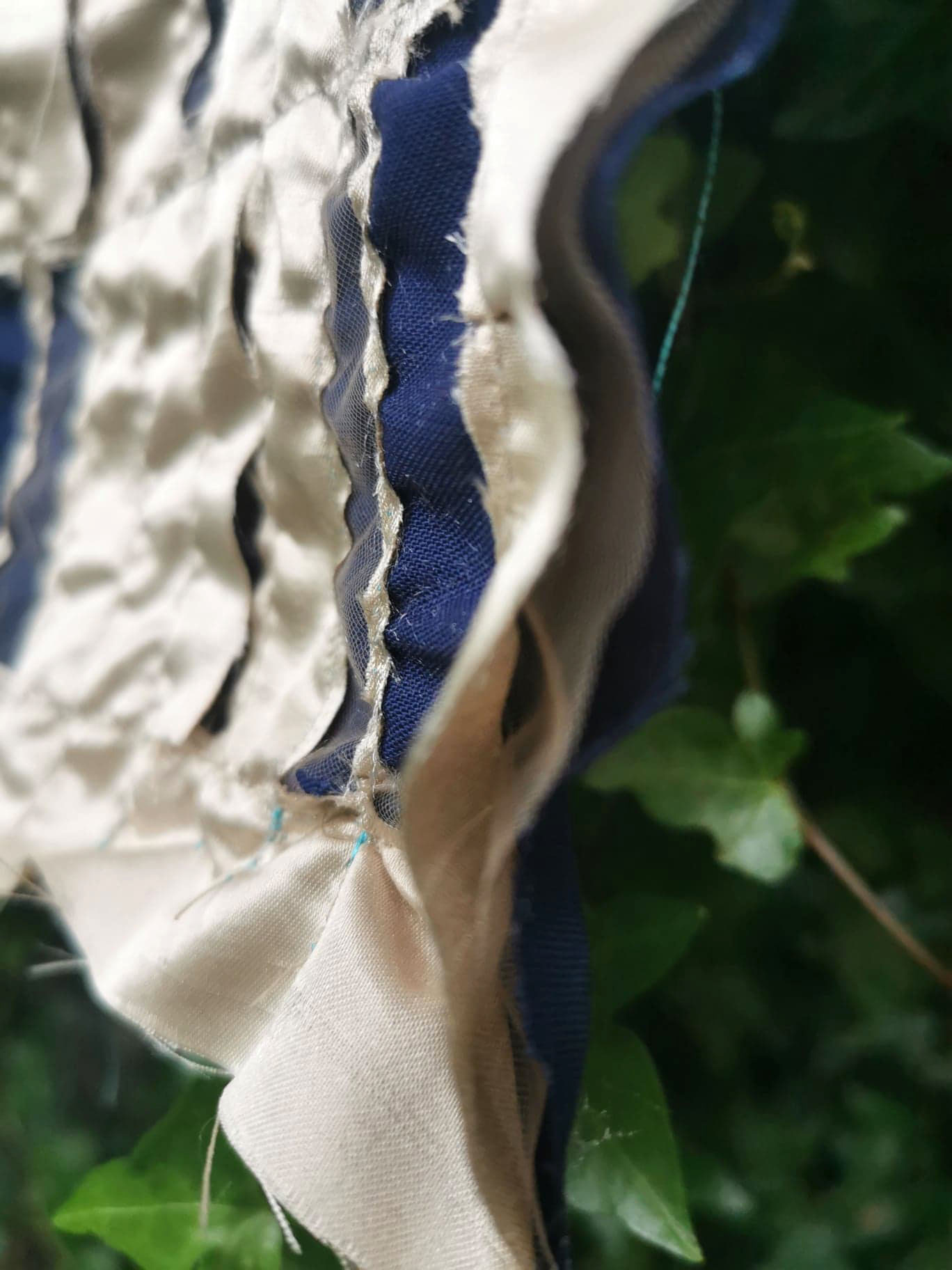
I like the visual roughness (eg. rough edges) in contrast with the soft feel of it.
So much more work ahead!
To be continued.


Your sampling is looking beautiful. You are doing a great job at conveying the weight and texture, plus the movement in the mola pieces. well done
Thank you very much, Lindy!